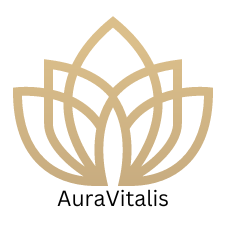Initial Expectations vs. Reality
As someone who thrives on high-intensity workouts, weight training, and dance fitness, my initial conceptions about yoga fell somewhere between mild curiosity and skepticism. I had always envisioned yoga as a slow, meditative practice, one lackluster in its ability to deliver the endorphin rush I cherished post an intense session. My apprehensions were primarily driven by the concern that yoga wouldn’t suffice in meeting my dynamic fitness needs.
Walking into the yoga studio for the first time was like stepping into a sanctuary of calm, starkly contrasting the high-energy environments I was accustomed to. The instructor greeted us warmly and initiated the class with a brief introduction to the day’s sequence. Right from the onset, her approach was a blend of thoughtfulness and precision, aiming to ensure each individual felt both challenged and supported.
The ambiance was serene, with dimmed lights and gentle music, designed to foster an atmosphere of relaxation. However, the reality of the class quickly diverged from my preconceived notions. We began with fundamental poses and breathwork, such as Cat-Cow stretches and the Mountain Pose. As simplistic as they appeared, maintaining proper form proved to be more physically engaging than anticipated.
My skepticism started to wane as the session progressed. The sequences gradually escalated in complexity and intensity while remaining accessible. The instructor’s cues on aligning breath with movement made each pose feel purposeful, dispelling my initial doubt about yoga’s efficacy. Surrounded by fellow participants intently focused on syncing their breath with flow, I found myself immersed in the practice, discovering a novel form of challenge and a new layer of fitness integration.
By the end of the class, I felt a profound sense of accomplishment intertwined with a surprising sense of tranquility. This yoga experience deftly reshaped my understanding, revealing it as a multifaceted discipline capable of complementing my high-intensity workout regimen while offering unique mental and physical benefits.
The Physical Experience
The yoga session provided a distinct contrast to the high-intensity workouts and weight training routines I’m accustomed to. Initially, I anticipated a somewhat leisurely experience compared to the dynamic nature of HIIT or the rigorous demands of heavy lifting. However, my perception was swiftly challenged once the class commenced. From the very first pose, my body was introduced to a novel realm of physical engagement.
Poses like the Downward Dog and Warrior sequences were more demanding than anticipated. Holding these poses for extended periods required significant strength and balance, working muscles in ways previously unexplored. My core and stabilizer muscles were consistently engaged, and even though the movements appeared simple, they demanded a remarkable level of precise control and muscle activation. The transitions between poses demanded a fluidity that I had not anticipated, akin to the coordination required in dance but with a focus on endurance and strength.
Surprisingly, certain poses such as the Child’s Pose and Savasana offered a reprieve, allowing moments of deep relaxation and stretching. These poses, while seemingly easy, highlighted areas of my body needing attention. The stretch achieved during these moments was profound, extending beyond the superficial layers of muscle to a deeper, more penetrating release, contrasting starkly with the tension often accrued from high-intensity workouts and weight training.
Throughout the session, I felt an acute awareness of my body’s flexibility, or lack thereof, in various movements. Yoga unveiled tight areas that had been overlooked in my regular fitness regimen. Poses such as Pigeon Pose and Forward Folds targeted these limitations, fostering a greater sense of flexibility and freedom of movement. Despite initial discomfort in these stretches, a sense of elongation and relief followed, underscoring the therapeutic benefits of yoga.
In the aftermath of the session, I experienced a balanced blend of physical exertion and calm. Unlike the fatigue typically following a heavy workout, I felt invigorated yet relaxed—a testament to yoga’s unique capacity to harmonize effort and ease. Unexpectedly, even small, precise movements, like engagements in balancing poses, enacted significant impacts on my physical state.
The Mental and Emotional Journey
As someone who enjoys the adrenaline rush that comes from high-intensity workouts, stepping into a yoga class was a transformative mental and emotional journey. In my usual fitness regime, I am accustomed to pushing my limits, concentrating on achieving maximum performance. However, the yoga class introduced an entirely different mindset—one that emphasized mindfulness, relaxation, and the inherent power of breathing techniques.
During the session, I was encouraged to focus on my breath, an exercise that initially seemed trivial compared to the heavy lifting and exhaustive cardio I was used to. Nonetheless, as the class progressed, I realized the importance of controlled, deep breathing in achieving a state of calmness and mental clarity. This subtle shift in focus allowed me to let go of the constant pressure to perform and simply be in the moment.
The experience also evoked a range of emotional responses. Moments of introspection crept in as I held various poses, challenging my usual approach to fitness. Instead of battling against my body’s limits, I found myself working with it, exploring its sensations, and acknowledging any discomfort without judgment. This conscious slowing down and grounding in the present moment was a stark contrast to the high-speed tempo of my regular workouts, providing a significant reduction in stress levels.
Mental hurdles were an integral part of the experience. Initially, I grappled with quieting my mind and breaking free from the relentless mental chatter that accompanies high-intensity training. But with guidance, I started to appreciate the calm that yoga fosters. It became less about physical exertion and more about fostering a deeper connection with my inner self, offering a unique kind of stress relief.
This shift wasn’t just about lowering the pace; it was about cultivating a heightened state of mental clarity and emotional balance. By the end of the class, I felt an unprecedented serenity and a significant shift in my typical workout mindset. The practice of mindfulness in yoga provided a refreshing contrast, underscoring the importance of relaxation techniques in maintaining mental and emotional well-being.
Reflections and Future Plans
Embarking on my first yoga class was a departure from my usual high-intensity workout regimen. My initial expectations were a mix of curiosity and cautious optimism; I anticipated a peaceful experience but doubted it would challenge me physically. Surprisingly, the session unfolded as a harmonious blend of mental tranquility and physical engagement. The mindful movements and deep stretches introduced me to muscles I rarely focus on during high-intensity training, providing a new dimension to my exercise routine.
What stood out the most was the contrast between my preconceived notions and the actual experience. I had expected a slow-paced, almost sedative series of poses, yet yoga proved to be deceptively demanding. Balancing on one foot while twisting my torso required concentration, strength, and flexibility. Though different from the adrenaline rush of HIIT or CrossFit, the satisfaction was immense—derived from the silent challenge of mastering each pose and the meditative breathing techniques that accompanied them.
Coming away from the class, I developed a newfound appreciation for yoga. It offered a sense of relaxation that high-intensity workouts fail to provide, counterbalancing the stress they often bring. This experience broadened my fitness perspective, making me acknowledge that there’s merit in integrating low-impact exercises into a high-intensity routine. Yoga has the potential to enhance flexibility, improve balance, and aid recovery—all crucial elements for anyone engaged in rigorous physical training.
Looking ahead, I plan to incorporate yoga into my regular fitness regimen. My strategy is to balance high-intensity sessions with yoga, allocating a few days each week to focus on it. This approach aims to ensure I gain the comprehensive benefits of both workout styles—building endurance and strength while fostering recovery and mental wellness.
For those who are still hesitant to try yoga, especially if you prefer intense physical activities, my advice is straightforward: keep an open mind. Yoga may not replace your high-intensity workouts, but it can complement them effectively, offering both physical and mental benefits that might surprise you.

